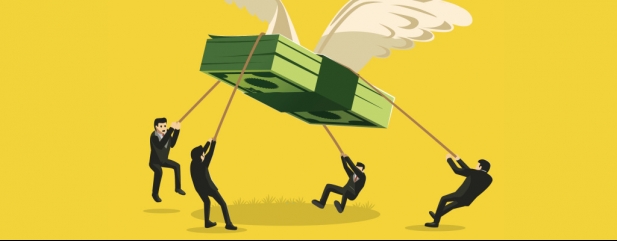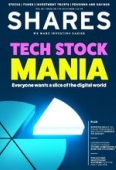Archived article
Please note that tax, investment, pension and ISA rules can change and the information and any views contained in this article may now be inaccurate.
The reasons why inflation could make a comeback

In its latest report on 14 July the UK’s Office for Budget Responsibility (OBR) said the country is on track for the largest decline in gross domestic product (GDP) for 300 years with a 2020 contraction of 12.7%. GDP is a measure of the total value of goods and services in the economy.
It says lower output and rising costs will push national debt as a proportion of GDP above 100% and is expected to remain elevated at unprecedented peacetime levels.
The UK is not alone with the International Monetary Fund (IMF) forecasting gross public debt for advanced countries rising above 130% of GDP, one of the highest levels since the Second World War.
With such a negative backdrop and interest rates near zero, could future inflation be higher than expected?
A non-consensual view
One person who thinks so is US economist Jeremy Siegel, professor of finance at the Wharton School of the University of Pennsylvania and most famous for his 1994 book Stocks for the Long Run.
While most observers see the Federal Reserve’s stimulus measures as a continuation of the quantitative easing (QE) policies that started after the financial crisis of 2008, Siegel has a different take. He puts this down to the influence of Milton Friedman on his thinking.
Friedman, who received a Nobel Memorial Prize in Economic Sciences in 1976, is known for the theory that too much money chasing too few goods causes inflation.
Siegel argues that the reason QE didn’t spark inflation after the 2008 financial crisis is because very little of the stimulus ended up in the real economy. US banks were so undercapitalised that they used the money to shore up their balance sheets.
Some economists believed the so-called ‘transfer mechanism’ had been broken. This is the process by which general economic conditions are affected by monetary policies. Most of the money created ended up as excess bank reserves rather than stimulating lending.

It really could be different this time
This time around QE has found its way directly into the economy because of the way the US government has orchestrated its support programmes. The Cares Act is the largest rescue legislation in American history with a $2 trillion price tag, ensuring every working American received $1,200 directly into their bank accounts.
This was followed by a $500 billion package for small businesses and the Heroes Act which will cost another $3 trillion if passed by the Senate. The Paycheck Protection Programme spun out of the Cares Act provides loans for businesses to keep paying their employees. The loans don’t need to be paid back if used for payrolls and general expenses.
This means the pandemic-induced stimulus has achieved something that trillions of dollars of quantitative easing never did in 2008/9.
And it’s showing up in the numbers. According to Siegel the supply of notes and coins sloshing around the economy, measured as M1, increased by nearly 25% between March and May. M1 is a measure of all the cash in deposits and checking accounts.
On 16 June, US retail sales for May jumped the most on record, by a staggering 17.7%, having sunk by 14.7% in April. This was revised upwards to 18.2% when June’s numbers were released on 16 July, which showed sales increased 7.5% from May, exceeding forecasts.
Siegel’s view is that if the policies are effective at stimulating the economy it may well result in a huge spending spree in 2021 which will put pressure on inflation. In his mind, after 40 years of a roaring bull market, it is the bond holders who will pay for Covid-19. Inflation makes interest rates go up, in turn making bond values go down.
Less efficient supply chains
One lesson that companies have learned from the pandemic is not to rely on so few supply chains which means future production will become less efficient but more reliable. This will also put some pressure on prices.
Siegel isn’t expecting runaway inflation, but even a tick up to the 3% level in the US over the next three years will be a wake-up call for the holders of government debt.
Economists Charles Goodhart and Manoj Pradhan say there is a risk of inflation from excess demand if stimulus is not withdrawn sufficiently as the economy recovers. Milton Friedman once said, ‘Nothing is as permanent as a temporary government program.’
Protecting yourself from inflation
UK inflation-LINKED bonds can increase in value during inflationary periods. Although the underlying market isn’t very deep, as an example the iShares £ Index-Linked Gilts UCITS ETF GBP (INXG) has almost £1 billion of assets and tracks the index-linked market for a low cost of 0.1%.
The product has delivered an annualised return of 8.4% over the last five years, according to Morningstar.

For investors looking for a more direct hedge, gold will generally perform well during periods of rising inflation. And for those looking for a sustainability angle, the London Bullion Markets Association (LBMA) has produced delivery criteria relating to the provenance and responsible sourcing of gold.
One example of a gold-related investment is Wisdom Tree Physical Gold ETF (PHAU) which is backed by physical allocated gold held by HSBC and conforms 100% to LBMA’s criteria. The ETF has delivered a 9.1% annualised return over the last five years and has a 0.39% annual cost.

Important information:
These articles are provided by Shares magazine which is published by AJ Bell Media, a part of AJ Bell. Shares is not written by AJ Bell.
Shares is provided for your general information and use and is not a personal recommendation to invest. It is not intended to be relied upon by you in making or not making any investment decisions. The investments referred to in these articles will not be suitable for all investors. If in doubt please seek appropriate independent financial advice.
Investors acting on the information in these articles do so at their own risk and AJ Bell Media and its staff do not accept liability for losses suffered by investors as a result of their investment decisions.

 magazine
magazine








